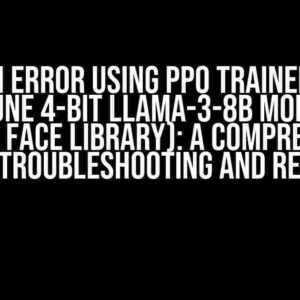Ever ventured into the realm of machine learning, only to find your C# MNIST neural network stuck in a rut? You’re not alone! In this article, we’ll delve into the intriguing phenomenon of a neural network that tantalizingly increases to about 20% accuracy, only to fall back to a disappointing 10%. Buckle up, folks, as we embark on a thrilling adventure to uncover the reasons behind this peculiarity and explore ways to overcome it.
What’s MNIST, You Ask?
For the uninitiated, MNIST is a renowned dataset of handwritten digits, comprising 60,000 images for training and 10,000 for testing. It’s a classic benchmark for neural networks, and a great starting point for machine learning enthusiasts. In C#, we can leverage the power of frameworks like Accord.NET to build and train our own MNIST neural network.
Let’s Get Started!
To begin, you’ll need to download the MNIST dataset and extract the images into a suitable format. We’ll use the Accord.NET framework to load and preprocess the data. Here’s some sample code to get you started:
using Accord.MachineLearning;
using Accord.Math;
using Accord.Statistics.Models.Regression.FactorAnalysis;
// Load the MNIST dataset
MulticlassClassificationProblem problem = new MulticlassClassificationProblem(
"mnist_train_images.idx3-ubyte",
"mnist_train_labels.idx1-ubyte",
10, // number of classes
784, // input dimensionality
10 // output dimensionality
);
// Preprocess the data
double[][] inputs = problem.Inputs.ToArray();
double[][] outputs = problem.Outputs.ToArray();
// Normalize the input data
double min = inputs.Min(x => x.Min());
double max = inputs.Max(x => x.Max());
for (int i = 0; i < inputs.Length; i++)
{
for (int j = 0; j < inputs[i].Length; j++)
{
inputs[i][j] = (inputs[i][j] - min) / (max - min);
}
}
Now that we have our data ready, let’s create a simple neural network using Accord.NET:
// Create a neural network with 2 hidden layers
ActivationNetwork network = new ActivationNetwork(
new BipolarSigmoidFunction(), // hidden layers
784, // input layer
256, // hidden layer 1
128, // hidden layer 2
10 // output layer
);
// Train the network
double[][] inputs = ...; // your preprocessed input data
double[][] outputs = ...; // your preprocessed output data
RegressionAnalysis analysis = new RegressionAnalysis(network, inputs, outputs);
analysis.Iterations = 1000;
analysis.LearningRate = 0.01;
analysis.Regularization = 0.01;
analysis.Run();
The 20% Conundrum
So, you’ve trained your neural network, and to your delight, it’s achieving an accuracy of around 20%. Congratulations! But, as you continue to train the network, you start to notice a peculiar phenomenon – the accuracy begins to plummet, eventually stabilizing at around 10%. What’s going on?
Overfitting: The Usual Suspect
One of the most common culprits behind this issue is overfitting. When a neural network is too complex, it tends to memorize the training data rather than learning generalizable patterns. This can result in the network performing exceptionally well on the training set but poorly on new, unseen data.
To counter overfitting, try the following:
- Regularization techniques: Add a regularization term to your loss function to reduce the magnitude of the network’s weights.
- Dropout: Randomly drop neurons during training to prevent the network from relying too heavily on individual neurons.
- Data augmentation: Increase the size of your training set by applying random transformations to the input data.
Underfitting: The Lesser-Known Offender
While overfitting is often the primary suspect, underfitting can also be a contributing factor. If your neural network is too simple, it may not have the capacity to learn the underlying patterns in the data, resulting in poor performance.
To address underfitting, consider:
- Increase the complexity of your neural network by adding more layers or neurons.
- Use a more complex activation function, such as the ReLU or tanh function.
- Collect more data to provide a better representation of the problem domain.
The Hidden Dangers of Local Optima
As you train your neural network, it’s possible to get stuck in a local optimum, where the network converges to a suboptimal solution. This can cause the accuracy to plateau or even decrease.
To escape local optima, try:
- Using a different optimization algorithm, such as stochastic gradient descent (SGD) or Adam.
- Initializing the network with different weights or bias values.
- Increasing the learning rate or number of iterations.
Beyond 20%: Tips and Tricks for Improved Accuracy
Now that we’ve explored the reasons behind the 20% conundrum, let’s dive into some advanced techniques to further improve your neural network’s accuracy:
Batch normalization is a powerful technique that normalizes the input data for each layer, reducing the impact of internal covariate shift. This can lead to faster training, improved stability, and better overall performance.
// Create a batch normalization layer
BatchNormalizationLayer batchnorm = new BatchNormalizationLayer(784);
// Add the batch normalization layer to the network
network.Add(batchnorm);
Transfer Learning: Leverage Pre-Trained Models
Transfer learning involves using pre-trained models as a starting point for your own neural network. This can be particularly effective when dealing with small datasets or limited computational resources.
// Load a pre-trained MNIST model
ActivationNetwork preTrainedNetwork = ...;
// Add your own custom layer on top of the pre-trained model
network.Add(new DenseLayer(128, 10));
Ensemble Methods: Combine Multiple Models
Ensemble methods involve combining the predictions of multiple neural networks to produce a more accurate output. This can be achieved through techniques like bagging, boosting, or stacking.
// Create multiple neural networks with different architectures
ActivationNetwork network1 = ...;
ActivationNetwork network2 = ...;
ActivationNetwork network3 = ...;
// Combine the predictions of the individual networks
double[][] predictions = new double[inputs.Length][];
for (int i = 0; i < inputs.Length; i++)
{
predictions[i] = new double[10];
predictions[i][0] = network1.Compute(inputs[i])[0];
predictions[i][1] = network2.Compute(inputs[i])[0];
predictions[i][2] = network3.Compute(inputs[i])[0];
}
// Compute the final prediction using the ensemble
double[] finalPrediction = new double[10];
for (int i = 0; i < 10; i++)
{
finalPrediction[i] = predictions.Average(x => x[i]);
}
Conclusion
There you have it, folks! With these techniques and insights, you should be well-equipped to tackle the mysterious case of the C# MNIST neural network that increases to about 20% accuracy, only to fall back to 10%. Remember to keep a vigilant eye out for overfitting, underfitting, and local optima, and don’t be afraid to experiment with advanced techniques like batch normalization, transfer learning, and ensemble methods.
| Techique | Description |
|---|---|
| Regularization | Adds a regularization term to the loss function to reduce overfitting |
| Dropout | Randomly drops neurons during training to prevent overfitting |
| Data Augmentation | Increases the size of the training set by applying random transformations |
| Batch Normalization | Normalizes the input data for each layer to reduce internal covariate shift |
| Transfer Learning | Uses pre-trained models as a starting point for your own neural network |
| Ensemble Methods | Combines the predictions of multiple neural networks to produce a more accurate output |


